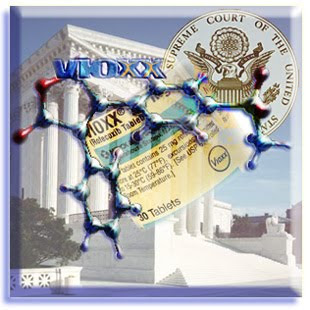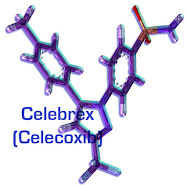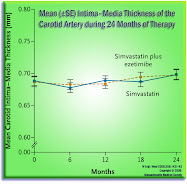 In Manhattan over the weekend, US District Court Judge John F. Keenan ruled on Merck's motions to exclude various pieces of testimony purportedly to be offered by various of the Plaintiff's experts -- granting Merck the right to exclude a few, but preserving, in my opinion, the heart of her case. These cases are usually "battles of the experts", and it often comes down to whose expert sounds more convincing, in offering his or her opinion testimony. Yes, in these cases, doctors (if qualified as experts on a given matter, by the court) may offer their opinions as to what caused Mrs. Graves' injuries -- and whether Fosamax® use made those injuries worse. Mrs. Graves has had portions of her lower mandible, or jaw bone, replaced with titanium protheses structures -- the anchoring of which, to her natural jawbone, has subsequently failed (at least once), requiring that more of her jawbone be cut out, and new titanium replacements be inserted.
In Manhattan over the weekend, US District Court Judge John F. Keenan ruled on Merck's motions to exclude various pieces of testimony purportedly to be offered by various of the Plaintiff's experts -- granting Merck the right to exclude a few, but preserving, in my opinion, the heart of her case. These cases are usually "battles of the experts", and it often comes down to whose expert sounds more convincing, in offering his or her opinion testimony. Yes, in these cases, doctors (if qualified as experts on a given matter, by the court) may offer their opinions as to what caused Mrs. Graves' injuries -- and whether Fosamax® use made those injuries worse. Mrs. Graves has had portions of her lower mandible, or jaw bone, replaced with titanium protheses structures -- the anchoring of which, to her natural jawbone, has subsequently failed (at least once), requiring that more of her jawbone be cut out, and new titanium replacements be inserted.
These are pretty horrific facts, and the demonstrative schematics of how the surgeries had to be performed, and the records of her necrosis, are likely to make for very tough-sledding for defense counsel (Merck's lawyers).
Here is the able judge's full Memorandum Opinion, and order (a 24 page PDF file). Several of Mrs. Graves' doctors, or experts, will be permitted to testify, as opinion experts, to the matters indicated below. Although her original prescription was not written to treat "regular" osteoporosis,  I do think the fact that Graves was not a smoker (Maley was -- and many believe that confounding variable led to her dismissla) will help convince the jury that she shouldn't be prevented from recovering against Merck solely because she had another concurrnet disease -- RA:
I do think the fact that Graves was not a smoker (Maley was -- and many believe that confounding variable led to her dismissla) will help convince the jury that she shouldn't be prevented from recovering against Merck solely because she had another concurrnet disease -- RA:
. . . .In June of 1999, Fosamax was approved for the treatment of glucocorticoid-induced osteoporosis (“GiOP”) in men and women. Glucocorticoids are a class of drugs that includes prednisone and other steroids used to treat rheumatoid arthritis [a disease that afflicts Mrs. Graves, the Plaintiff]. . . .
On August 4, 2005, while treating [Mrs. Graves], Dr. James Cherry, a maxillofacial and oral surgeon, formed a “working diagnosis” that Fosamax was contributing to Graves’ condition.
Graves has also been treated by Dr. Douglas Villaret, a specialist in head and neck reconstructive surgery, who performed a radical resection of Graves’ mandible in June of 2006 and a revision surgery in June of 2007. Dr. Villaret diagnosed Graves as having bisphosphonate-associated ONJ using a differential diagnosis. Dr. Villaret reasoned that the only three possible causes for Graves’ injuries, as reflected in her medical records, were radiation therapy, severe trauma, and bisphosphonate use.
Given that there was no record of Graves having suffered from severe trauma or radiation therapy, he concluded that bisphosphonate use was the cause of Graves’ injuries.  On August 8, 2007, Dr. Robert Marx began to treat Plaintiff after the fracture of a titanium plate placed in her jaw during Dr. Villaret’s second resection surgery. At the time that Dr. Marx treated Graves, she was no longer suffering from ONJ, but Plaintiff characterizes Dr. Marx as having treated her for the “sequelae,” or resulting injuries, of ONJ. Dr. Marx has testified that he concluded that Graves had suffered from ONJ related to her Fosamax use and based this conclusion on his review of prior doctors’ treatment records. . . .
On August 8, 2007, Dr. Robert Marx began to treat Plaintiff after the fracture of a titanium plate placed in her jaw during Dr. Villaret’s second resection surgery. At the time that Dr. Marx treated Graves, she was no longer suffering from ONJ, but Plaintiff characterizes Dr. Marx as having treated her for the “sequelae,” or resulting injuries, of ONJ. Dr. Marx has testified that he concluded that Graves had suffered from ONJ related to her Fosamax use and based this conclusion on his review of prior doctors’ treatment records. . . .
Unlike many Fosamax patients that were prescribed Fosamax because they suffered from osteoporosis, or osteopenia, Dr. Adams prescribed Fosamax in order to prevent Graves from developing GiOP. . . .
As Drs. Villaret and Akers have provided admissible expert opinion that Graves’ injury was proximately caused by her Fosamax use, Plaintiffs have put forth sufficient evidence to create a genuine issue of material fact on the issue of specific causation. Merck’s motion for summary judgment on this ground is denied. . . .
Keep an eye out, on Friday, to see whether the jury is seated by end of day. If not Friday, then it will likely be Monday, November 1, 2010. Honestly, from where I sit, this one bears many of the earmarks of another
large verdict against Merck.

 This is all becoming rather redundant after a spell, but again, Adam Feurstein has it just right here:
This is all becoming rather redundant after a spell, but again, Adam Feurstein has it just right here:




































